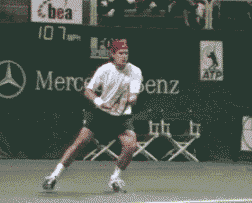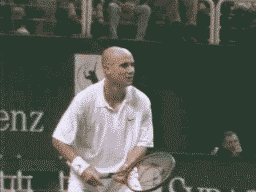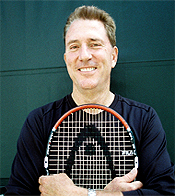
The Myth of the Wrist:The Modern Pro ForehandBy John Yandell
We've heard it a million times during TV matches, "With a flick of the wrist, he rifled another winner up the line!" It's a favorite phrase of many commentators, including the great John McEnroe. It's also common in tennis teaching. Recently I heard a teaching pro bellow at a beginning student: "Snap your wrist! 70% of your power is in your wrist!" It may be widely believed and widely taught, but does that make it true? Is the wrist snap the key to producing power in tennis? The answer is no. In fact, with a few limited exceptions, the wrist plays no role in the bio-mechanics of the strokes. "The flick of the wrist" is a myth, a myth that is at the root of many technical problems for players at all levels. If the wrist is a myth, doesn't that also go against what we see with our own eyes when we watch the pros? It seems obvious that many top players release their wrists on most if not every stroke.
But the question to ask is when does this wrist release occur, and what role, if any, does it play in the active bio-mechanics of the stroke? In this article we will examine the myth of the wrist in the modern pro forehand, using Andre Agassi and Tommy Haas examples. In subsequent articles, we'll examine the myth of the wrist in other strokes as well.
Agassi's grip is a moderate semi-western with most of his hand behind the racket handle and part of his hand underneath. Haas's grip is an extreme semi-western, verging on a full western, with less of his hand behind the handle, and more of his hand underneath. To the naked eye, both players may appear to use considerable wrist, but this perception is due to the limits of human vision. The naked eye cannot register an event that takes place in 4 milliseconds--the length of time it takes for a tennis racket to strike a tennis ball. What the racket, hitting arm, and wrist are doing at the contact are, literally, invisible to the human eye.
Want to study the rest of this article?
Contact Tennisplayer directly: jyandell@tennisplayer.net Copyright Tennisplayer 2005. All Rights Reserved. | ||||



